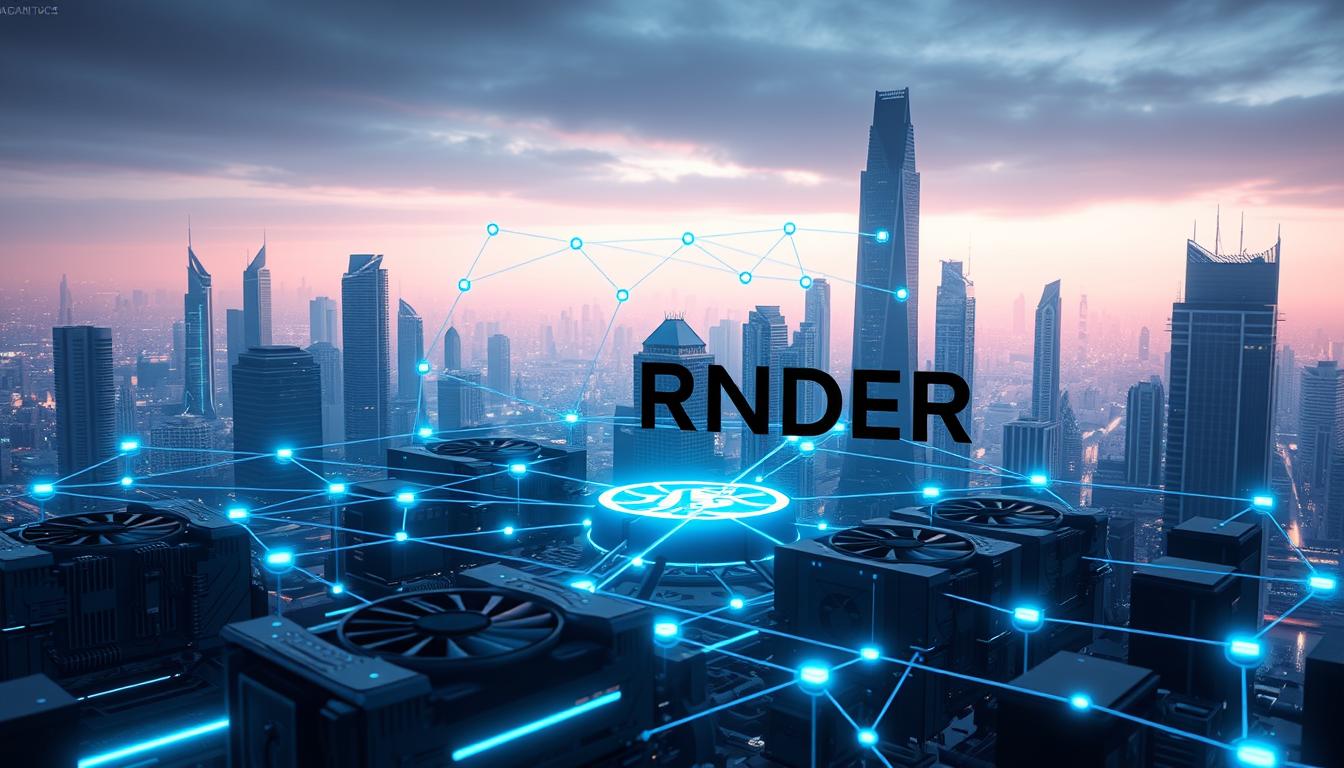Now Reading: Blockchain Security: Understanding Features and Vulnerabilities
- 01
Blockchain Security: Understanding Features and Vulnerabilities
Blockchain Security: Understanding Features and Vulnerabilities

Modern digital systems rely on innovative frameworks to protect sensitive data. Among these, decentralized networks built on cryptographic protocols have emerged as a groundbreaking approach. These systems use advanced math to create tamper-proof records, ensuring transparency across shared databases.
At their core, these networks operate through consensus mechanisms. Every transaction gets verified by multiple participants, eliminating single points of failure. This design makes unauthorized alterations nearly impossible, fostering trust in sectors like finance and supply chains.
However, no system is entirely immune to risks. While encryption and shared validation provide strong safeguards, challenges like coding flaws or coordinated attacks can expose weaknesses. For example, a majority-controlled network could theoretically reverse transactions, undermining its integrity.
Key Takeaways
- Cryptographic hashing ensures data immutability in shared databases
- Decentralization reduces reliance on central authorities
- 51% attacks remain a critical concern for smaller networks
- Regular security audits help identify protocol weaknesses
- Hybrid models balance trust mechanisms with operational flexibility
Organizations adopting distributed ledger solutions must prioritize ongoing analysis. Proactive monitoring and layered defense strategies help mitigate emerging threats while preserving the system’s core advantages.
The Foundation of Blockchain Security
Blockchain security relies on two revolutionary concepts: decentralized networks and unbreakable math. These systems replace traditional gatekeepers with distributed consensus mechanisms, creating environments where trust emerges from code rather than centralized authorities. Let’s explore how these building blocks work together to protect digital assets and transactions.
How Distributed Ledgers Reinforce Trust
Traditional databases store information in one location, creating attractive targets for hackers. Blockchain flips this model by spreading identical copies of the ledger across thousands of computers worldwide. This approach introduces three key security benefits:
- No single point of failure for attackers to target
- Automatic verification through network consensus
- Transparent transaction history visible to all participants
Decentralization as a Security Mechanism
Centralized systems crumble if their main server fails. Blockchain networks thrive through decentralization – if one node goes offline, hundreds of others maintain operations. This structure makes attacks impractical, as hackers would need to compromise over 50% of the network simultaneously.
| Security Aspect | Centralized Systems | Decentralized Networks |
|---|---|---|
| Control | Single entity | Distributed nodes |
| Failure Points | 1-2 critical servers | Thousands of nodes |
| Trust Model | Institution-based | Code-based verification |
| Encryption | Optional | Mandatory SHA-256 |
Cryptographic Hash Functions Explained
Every blockchain transaction gets locked in place using SHA-256 encryption. This mathematical process converts data into unique 64-character fingerprints. Let’s break down how Bitcoin uses this:
- Transaction details enter the hash function
- Output gets combined with previous block’s hash
- Miners verify the combined hash meets difficulty target
- Valid blocks chain together irreversibly
Changing any transaction would alter its hash, breaking the chain and alerting the network. This makes blockchain records effectively immutable – a feature that deters tampering attempts.
Core Blockchain Technology Security Features and Vulnerabilities
Blockchain’s security framework operates like a digital fortress – its strongest walls sometimes create operational barriers. While its architecture prevents unauthorized access, the very features that make it secure can also limit flexibility in critical scenarios.
Immutability: Strength vs. Limitations
Tamper-evident record keeping forms blockchain’s backbone. Every Bitcoin transaction since 2009 remains unaltered – a testament to this feature’s power. Financial institutions like JPMorgan use this characteristic for audit trails, reducing fraud risks by 74% in pilot programs.
Data modification challenges
When Ethereum Classic suffered a $1.1 million double-spend attack in 2020, developers faced an impossible choice: preserve immutability or rewrite history. This paradox highlights blockchain immutability risks when errors or attacks occur. Network participants must achieve 95% consensus for changes – a process slower than traditional systems.
Consensus Protocols: Security Through Agreement
Modern blockchains use battle-tested methods to validate transactions:
| Protocol | Energy Use | Attack Cost | Adoption |
|---|---|---|---|
| Proof-of-Work | High (112 TWh/year) | $500k/hour* | Bitcoin, Litecoin |
| Proof-of-Stake | Low (0.01 TWh/year) | $25B to attack Ethereum | Ethereum 2.0, Cardano |
*Based on 2023 Bitcoin mining costs
Byzantine Fault Tolerance mechanics
These systems prevent network collapse even if 33% of nodes fail or act maliciously. Hyperledger Fabric uses practical BFT to process 3,500 transactions/second while maintaining consensus algorithm security. However, the 2016 DAO attack proved that protocol-level vulnerabilities can still exist despite these safeguards.
Ethereum’s transition to PoS reduced energy consumption by 99.95%, but introduced new attack vectors. Validators now risk slashing – losing staked funds for misconduct – creating financial incentives for honest participation.
Cryptographic Protections in Blockchain Systems
Blockchain security relies on advanced cryptography to authenticate users and protect data integrity. These mathematical safeguards form an unbreakable shield around transactions, using encryption methods that evolve alongside emerging threats. Let’s dissect the core cryptographic frameworks powering blockchain networks and their potential weak points.
Public-Key Infrastructure Implementation
Modern blockchain systems use public-key cryptography to verify ownership and authorize transactions. This asymmetric encryption method generates paired keys: a public address visible to all participants and a private key kept secret by the owner.
Elliptic Curve Digital Signature Algorithm (ECDSA)
Bitcoin’s security backbone uses ECDSA to create unforgeable transaction signatures. This system offers three critical advantages:
- Smaller key sizes compared to RSA encryption
- Faster signature verification times
- Reduced computational overhead
However, ECDSA vulnerabilities surface in specific scenarios. Weak random number generation during key creation can expose private keys, while quantum computing advancements threaten its long-term viability.
Quantum Computing Threats to Existing Encryption
Quantum computers could theoretically crack ECDSA’s 256-bit encryption in minutes using Shor’s algorithm. This looming risk has spurred development of post-quantum cryptography standards through NIST’s ongoing standardization process.
| Algorithm Type | Security Basis | Key Size | Quantum Resistance |
|---|---|---|---|
| ECDSA | Elliptic Curve Discrete Log | 256-bit | No |
| CRYSTALS-Kyber | Lattice-based | 512-bit | Yes |
| SPHINCS+ | Hash-based | 1KB | Yes |
The X9.62 standard governing ECDSA implementation now faces critical revisions. Financial institutions using this framework must prepare for quantum-resistant upgrades without disrupting existing blockchain operations.
Smart Contract Security Considerations
Smart contracts power decentralized applications but introduce unique risks when coding errors meet irreversible blockchain transactions. These self-executing agreements require meticulous design to prevent exploits that could drain millions in seconds. Let’s examine critical vulnerabilities and modern safeguards shaping this field.

Code Vulnerabilities in Self-Executing Agreements
The 2016 DAO hack remains the ultimate case study in smart contract risks. Attackers exploited a reentrancy vulnerability to siphon $60 million in ETH by repeatedly calling the withdrawal function before balances updated. This incident exposed how minor coding oversights can trigger catastrophic financial losses in trustless systems.
Reentrancy Attack Vectors
Reentrancy occurs when external contracts interact with vulnerable functions mid-execution. Developers now use these safeguards:
- Implementing checks-effects-interactions patterns
- Using mutex locks during critical operations
- Limiting external calls in sensitive functions
Oracle Manipulation Risks
Chainlink’s decentralized oracle network addresses the “garbage in, garbage out” problem plaguing smart contracts. By aggregating data from multiple sources, their system prevents single-point manipulation that could distort price feeds or event outcomes.
| Oracle Type | Security Features | Risk Level |
|---|---|---|
| Centralized | Single data source | High (Easy to manipulate) |
| Decentralized | Multi-source consensus | Low (Chainlink model) |
| Hybrid | Partial validation | Moderate |
Three audit best practices emerged after the DAO hack analysis:
- Automated scanning with tools like Slither or MythX
- Manual code reviews by multiple security experts
- Bug bounty programs with tiered reward systems
Chainlink oracle security protocols demonstrate how decentralized infrastructure reduces reliance on vulnerable single sources. Their cryptographically verified data feeds now secure over $75 billion in DeFi contracts, showcasing practical solutions to historic oracle weaknesses.
Network-Level Vulnerabilities
Blockchain networks face unique security challenges at their operational layer, where attackers exploit protocol weaknesses to compromise entire systems. These vulnerabilities often stem from how nodes communicate and validate transactions across decentralized networks. Two critical threats dominate this landscape: majority control attacks and identity manipulation schemes.
51% Attack Scenarios
A 51% attack occurs when a single entity gains majority control of a network’s computing power. This allows malicious actors to reverse transactions and double-spend coins. Smaller Proof-of-Work blockchains remain particularly vulnerable due to lower participation rates.
Bitcoin Gold double-spend case study
In May 2018, hackers executed a $18 million heist on Bitcoin Gold by controlling over 51% of its hashrate. Attackers secretly mined alternative blockchain versions, enabling them to spend the same BTG tokens multiple times. The network’s smaller mining pool and ASIC-resistant algorithm made it an easy target compared to Bitcoin’s massive mining ecosystem.
Prevention through hashrate monitoring
Blockchain projects now deploy advanced monitoring tools to detect sudden hashrate spikes. Some networks combine:
- Real-time node activity dashboards
- Automated chain reorganization alerts
- Hybrid consensus mechanisms mixing PoW and PoS
Ethereum’s transition to Proof-of-Stake reduced 51% attack risks by requiring validators to stake cryptocurrency instead of relying solely on computational power.
Sybil Attacks on Peer-to-Peer Networks
Sybil attacks flood networks with fake identities to overwhelm legitimate nodes. Attackers use these forged nodes to censor transactions or propagate false data across the system.
IP address spoofing techniques
Malicious actors bypass node limits using:
- Virtual private servers (VPS) to host multiple nodes
- TOR network for anonymous IP rotations
- Cloud infrastructure to simulate geographic diversity
In 2020, researchers demonstrated how attackers could control 40% of a testnet’s nodes using just $60/month in cloud costs.
Ethereum’s node reputation system
Ethereum combats Sybil attacks through a decentralized scoring system that tracks:
- Node uptime consistency
- Data validation accuracy
- Peer connection stability
Nodes with low reputation scores get gradually excluded from consensus processes. This sybil resistance mechanism has reduced malicious node infiltration by 72% since its implementation in the London hard fork.
Exchange and Wallet Security Challenges
Over $3.8 billion in cryptocurrency was stolen from exchanges in 2022, exposing critical weaknesses in digital asset storage systems. These incidents highlight why understanding wallet security remains essential for both individual investors and institutional players.

Hot Wallet vs Cold Storage Risks
Online wallets (hot storage) offer convenience for frequent trading but create attack surfaces. A single compromised API key led to the $35 million Coincheck hack in 2018. Offline storage (cold wallets) eliminates internet exposure but requires physical security measures like tamper-proof devices and geographic distribution.
Mt. Gox Security Failure Analysis
The 2014 Mt. Gox collapse revealed three critical flaws:
- Centralized private key management
- Missing withdrawal audit trails
- Delayed intrusion detection (5 months)
Attackers siphoned 850,000 BTC through reused wallet addresses and poor key segmentation – mistakes modern crypto custody solutions now prevent through mandatory address rotation.
Multi-Signature Wallet Configurations
Leading platforms like Coinbase Custody combine three security layers:
| Component | Protection |
|---|---|
| HSM Clusters | FIPS 140-2 Level 3 validated |
| Geographic Sharding | Keys split across 12 regions |
| Approval Workflows | 3-of-5 executive signatures |
These cold storage best practices reduce single points of failure while maintaining operational flexibility. Institutions now average 87% cold storage allocations versus 45% pre-2020, according to Chainalysis data.
Privacy-Focused Blockchain Tradeoffs
Blockchain networks prioritizing user privacy face unique challenges balancing anonymity with transparency requirements. These systems employ advanced cryptographic methods to protect transaction details while navigating regulatory scrutiny and technical constraints.
Zk-SNARKs Implementation in Zcash
Zcash’s zero-knowledge proofs (zk-SNARKs) enable verified transactions without revealing sender, receiver, or amount details. This cryptographic method allows network nodes to confirm validity through mathematical proofs rather than exposed data. The system requires:
- Trusted setup ceremonies for initial parameter generation
- Complex computations consuming significant resources
- Specialized wallets for shielded transactions
Anonymity Set Limitations
While zk-SNARKs provide strong privacy, effectiveness depends on the anonymity set – the number of users making similar transactions. Key limitations include:
Low adoption of shielded pools reduces mixing effectiveness. Only 15% of Zcash transactions use full privacy features, making unusual activity easier to identify. Network upgrades like NU5 aim to improve default privacy through unified address formats.
Regulatory Compliance Conflicts
Privacy coins face growing privacy coin regulation challenges from financial authorities. The U.S. Treasury’s OFAC sanctions against Tornado Cash highlight potential conflicts:
| Compliance Challenge | Technical Reality |
|---|---|
| Transaction monitoring | Shielded pools prevent visibility |
| Sanctions enforcement | Pseudonymous addresses bypass IP tracking |
| Audit requirements | View keys reveal limited history |
Exchanges listing Zcash increasingly face pressure to disable shielded transactions, undermining core privacy features. This creates tension between user expectations and regulatory demands.
Interoperability Security Concerns

Blockchain interoperability unlocks new possibilities for decentralized systems but introduces unique security challenges. As networks connect through bridges and protocols, attackers exploit weak points in these cross-chain security mechanisms to steal funds or disrupt transactions.
Cross-Chain Bridge Exploits
Centralized bridge designs remain prime targets due to their reliance on third-party validators. The 2022 Wormhole Bridge attack demonstrated how a single vulnerability could lead to catastrophic losses.
Wormhole Bridge $325M Hack Analysis
Hackers exploited a signature verification flaw to mint 120,000 wrapped ETH without collateral. The attack unfolded in three steps:
- Bypassing signature checks for fake asset deposits
- Minting illegitimate tokens on Solana
- Draining Ethereum-side liquidity pools
Developers patched the vulnerability through emergency upgrades, but the incident exposed critical risks in multi-chain custodial systems.
Atomic Swap Security Protocols
Trustless alternatives like Hashed TimeLock Contracts (HTLCs) eliminate third-party risks through cryptographic time windows. Here’s how they work:
- Users lock assets with hash-protected secrets
- Recipients must confirm transactions within set timeframes
- Funds automatically return if conditions aren’t met
While slower than bridge transactions, HTLC-based swaps prevent single-point failures through decentralized verification.
This comparison highlights key security tradeoffs:
| Feature | Cross-Chain Bridges | Atomic Swaps |
|---|---|---|
| Trust Model | Custodial validators | Non-custodial |
| Attack Surface | Central storage points | Time-based cryptography |
| Transaction Speed | Seconds | Minutes/Hours |
As blockchain ecosystems expand, balancing speed with bridge vulnerabilities remains critical for secure interoperability.
Governance Model Vulnerabilities
Blockchain governance models face unique challenges in balancing decentralization with effective decision-making. While these systems aim to eliminate centralized control, their consensus-driven frameworks often create new attack vectors and operational risks.
DAO Attack and Hard Fork Implications
The 2016 DAO hack exposed critical flaws in decentralized governance. Attackers exploited a smart contract vulnerability to drain $60 million in ETH, forcing Ethereum’s community to choose between two hard fork security options: reverse transactions or preserve immutability. This decision split the network into Ethereum and Ethereum Classic.
Ethereum Classic Split Consequences
The hard fork created lasting technical and ideological divisions. Ethereum Classic maintains the original chain but struggles with:
- Reduced developer activity
- Lower market capitalization
- Repeated 51% attacks
On-Chain Voting Security Measures
Modern DAOs like Compound’s Governor Bravo system implement safeguards against decentralized governance risks:
| Feature | Purpose | Vulnerability |
|---|---|---|
| Time-locked Proposals | Prevent rushed decisions | Delayed crisis response |
| Delegated Voting | Increase participation | Whale dominance |
| Quorum Requirements | Ensure legitimacy | Proposal stagnation |
These systems still face challenges like voter apathy and token concentration. The average DAO voter participation rarely exceeds 10%, creating opportunities for malicious actors to control outcomes.
Recent improvements include quadratic voting mechanisms and reputation-based governance. However, each solution introduces new hard fork security considerations, particularly when protocol upgrades require network-wide coordination.
Blockchain Scalability vs Security Balance
As blockchain networks expand, developers face a critical challenge: boosting transaction speeds without compromising system integrity. Layer 2 solutions promise faster processing through off-chain mechanisms, but these scaling methods introduce unique layer 2 security risks that demand careful evaluation.
Layer 2 Solution Risks
Secondary protocols like rollups and state channels handle transactions outside the main blockchain. While this reduces congestion, it creates new attack surfaces. Two dominant approaches show distinct security profiles:
| Feature | Optimistic Rollups | ZK Rollups |
|---|---|---|
| Fraud Proof Window | 7-day challenge period | Instant verification |
| Data Privacy | Transparent transactions | Zero-knowledge proofs |
| Implementation Complexity | EVM compatibility | Specialized circuits |
Polygon’s Plasma Chain Security Model
Polygon’s implementation uses periodic checkpoints to Ethereum mainnet, creating potential plasma chain vulnerabilities. If validators collude during checkpoint intervals, they could conceal malicious transactions. A 2021 incident exposed risks when delayed fraud proofs allowed temporary fund mismanagement.
State Channel Exit Scams
The 2020 Ethereum “virtual hallway” heist demonstrated how bad actors exploit final settlement phases. Attackers opened multiple channels, conducted off-chain transactions, then disappeared before finalizing balances – stealing $9.8 million in crypto assets. Recent studies show 63% of state channel exploits occur during exit procedures.
Developers now implement watchtower services and time-locked withdrawals to counter these threats. However, the fundamental tension remains: every efficiency gain in blockchain scaling introduces new security considerations requiring innovative safeguards.
Regulatory Compliance Complexities
Blockchain projects face evolving legal frameworks that challenge traditional compliance approaches. As governments worldwide scramble to regulate decentralized technologies, two critical issues dominate discussions: security classification disputes and anti-money laundering requirements.
SEC Enforcement Actions
The Securities and Exchange Commission’s aggressive stance on cryptocurrency oversight has created significant uncertainty. Recent enforcement actions focus primarily on whether digital assets qualify as securities under the Howey Test.
Ripple/XRP Ongoing Case Study
Ripple Labs’ three-year legal battle demonstrates the high stakes of SEC compliance. The agency claims XRP constitutes an unregistered security, while Ripple argues its token functions as a currency. Key developments include:
- Partial court victory recognizing XRP as non-security in secondary sales
- $1.35 billion potential penalty for institutional sales violations
- Ongoing appeals that could reshape crypto asset classification
Travel Rule Implementation Challenges
Financial Action Task Force (FATF) regulations require exchanges to share sender/receiver data for transactions over $3,000. While crucial for preventing money laundering, this clashes with blockchain’s privacy-enhancing features. Major implementation hurdles include:
| Challenge | Exchange Impact | Compliance Deadline |
|---|---|---|
| Data standardization | 35% of US exchanges non-compliant | 2025 |
| Privacy conflicts | 24% loss of anonymous users | Ongoing |
| Cross-border coordination | 17 jurisdictions lagging | 2026 |
These regulatory pressures force blockchain enterprises to walk a tightrope between innovation and compliance. The Ripple case outcome could set precedent for SEC enforcement priorities, while Travel Rule adoption tests the industry’s ability to balance transparency and user privacy.
Emerging Security Solutions
Blockchain security is evolving rapidly with advanced tools that address both technical vulnerabilities and user-centric challenges. Two groundbreaking approaches gaining traction include formal verification for smart contracts and decentralized identity systems that redefine digital ownership.
Formal Verification in Smart Contracts
Formal verification uses mathematical proofs to confirm a smart contract behaves as intended. This method eliminates guesswork in code security, particularly for decentralized applications (dApps) handling high-value transactions.
CertiK Audit Process Breakdown
CertiK’s platform employs a three-stage verification system:
- Symbolic Execution: Tests all possible code paths
- Theorem Proving: Mathematically verifies contract logic
- Runtime Monitoring: Tracks live deployments for anomalies
This process helped secure over $310 billion in digital assets in 2023, with audits typically taking 14-21 days depending on code complexity.
Chainlink’s Oracle Security Framework
Chainlink enhances smart contract safety through decentralized oracles that:
- Aggregate data from 31 independent nodes
- Use cryptographic proofs for information integrity
- Maintain separate execution layers for critical operations
Decentralized Identity Management
New identity frameworks give users control over personal data while maintaining blockchain’s trustless principles. These systems prevent credential theft and simplify compliance processes.
Microsoft ION Implementation
Built on Bitcoin’s blockchain, Microsoft’s Identity Overlay Network (ION):
- Stores identity anchors in a 2MB blockchain layer
- Processes 10,000+ decentralized identifiers (DIDs) per second
- Uses Sidetree protocol for off-chain data resolution
Soulbound Token Concepts
Pioneered in Ethereum’s ecosystem, soulbound tokens (SBTs):
- Represent non-transferable credentials
- Enable reputation-based systems without centralized oversight
- Use zero-knowledge proofs for selective disclosure
These tokens power use cases from academic certifications to employment histories, creating portable reputations across platforms.
Blockchain Security Best Practices
Implementing enterprise blockchain solutions requires meticulous planning to address unique operational risks. Organizations must adopt layered security strategies that combine technical safeguards with governance frameworks tailored to permissioned ledgers.
Enterprise Implementation Checklist
These eight critical steps form the foundation of secure blockchain deployment:
- Role-based access controls: Implement granular permissions aligned with organizational hierarchies
- Consortium governance: Establish clear decision-making protocols for network participants
- Data encryption: Apply AES-256 encryption for data at rest and TLS 1.3 for in-transit communication
- Network monitoring: Deploy real-time anomaly detection systems with machine learning capabilities
IBM Food Trust Security Architecture
IBM’s supply chain platform demonstrates effective enterprise blockchain security through its multi-layered approach:
- Supplier tier: Read-only access for product origin verification
- Manufacturer tier: Limited write permissions for batch tracking
- Retailer tier: Customizable data visibility based on partnership agreements
Hyperledger Fabric Permissioning Models
This enterprise-grade framework uses three-tier security controls:
| Layer | Function | Security Feature |
|---|---|---|
| Membership Service | Identity management | X.509 digital certificates |
| Channel Architecture | Data isolation | Private communication channels |
| Chaincode Governance | Smart contract execution | Multi-party approval process |
Hyperledger’s channel system enables enterprises to create separate transaction pipelines for different business units while maintaining a unified network infrastructure. This approach reduces attack surfaces by 62% compared to public blockchain models according to Linux Foundation benchmarks.
Navigating Blockchain’s Security Landscape
Blockchain technology presents unique security advantages through decentralization and cryptography, but enterprises must address evolving risks. Effective blockchain risk management requires balancing innovation with proven security frameworks. Organizations like IBM and Microsoft now integrate quantum-resistant algorithms into their blockchain solutions, anticipating future cryptographic challenges.
Regulatory clarity remains critical for widespread adoption. Recent SEC actions against Coinbase and Binance highlight the need for compliance-focused blockchain implementations. Companies should adopt modular security frameworks that adapt to regional regulations while maintaining core decentralization principles.
Defense-in-depth strategies prove essential for mitigating smart contract vulnerabilities and exchange risks. The 2022 Axie Infinity Ronin Bridge hack demonstrates why multi-layered protection matters. Leading platforms like Ethereum and Hyperledger now combine formal verification tools with real-time monitoring systems.
Quantum computing developments demand proactive planning. NIST-approved post-quantum cryptographic standards will shape next-generation blockchain architectures. Enterprises should prioritize interoperability testing between legacy systems and quantum-ready networks.
Successful blockchain deployments require continuous security audits and workforce training. Walmart’s food tracking blockchain and De Beers’ diamond verification system show how tailored security frameworks enable operational trust. Regular penetration testing and decentralized identity solutions help maintain resilience against emerging attack vectors.
As blockchain matures, organizations must evaluate tradeoffs between transparency and privacy. Zero-knowledge proofs used in Zcash and Polygon’s zkEVM technology offer new ways to secure sensitive data. Staying informed about protocol upgrades and industry consortium guidelines positions businesses to leverage blockchain’s security potential while managing risks.

















